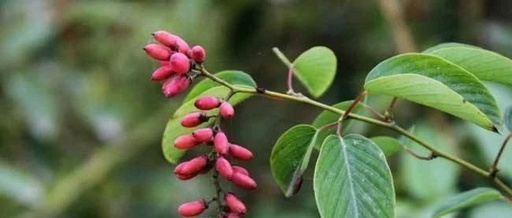Tie Bao Jin (Iron-Wrapped Gold), also known as Shu Ru Gen (Mouse Milk Root), Lao Shu Er (Mouse Ear), Ya Gong Qing (Duck Green), Wu Long Gen (Black Dragon Root), and Gou Er Cha (Hook Tea).
It belongs to the family Rhamnaceae and is a climbing or dwarf shrub. The root’s corky hairs are brown like iron, and the wood part is yellow like gold, hence the name Tie Bao Jin. It prefers to climb on stones or other trees and can reach up to 21 meters.
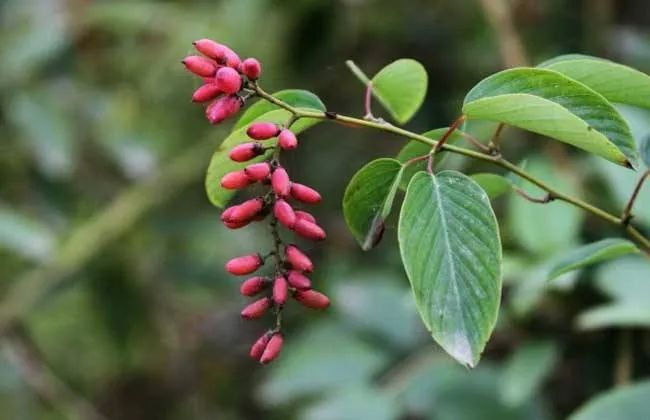
The young branches are yellow-green, cylindrical, and covered with short soft hairs.
The leaves are papery, oval or elliptical in shape.
The flowers are white, usually clustered in dense terminal umbellate inflorescences of several to over ten, or sometimes 1-5 clusters in the leaf axils at the lower part of the inflorescence.
The fruit is cylindrical, turning black or purplish-black when ripe. The flowering period is from July to October, and the fruiting period is in November.
It is distributed in various southern regions of China, thriving in low-altitude mountains, shrublands, roadsides, slopes, and hills.
For medicinal use, the stems and roots of Tie Bao Jin and related plants such as Da Ye Tie Bao Jin (Large Leaf Tie Bao Jin) and Guang Zhi Gou Er Cha (Light Branch Hook Tea) are utilized. In late summer to early autumn, the tender stems and leaves are harvested before flowering, impurities are removed, chopped, and used fresh or dried; roots are collected in autumn, used fresh or sliced and dried for medicinal purposes.
The properties are slightly bitter, astringent, and neutral. It has the effects of promoting blood circulation, stopping bleeding, relieving cough, and alleviating pain.
It is used for hemoptysis due to pulmonary tuberculosis, bleeding from gastric and duodenal ulcers, schizophrenia, traumatic injuries, rheumatic bone pain, carbuncles and boils, cervical lymphadenopathy, and testicular swelling and pain.
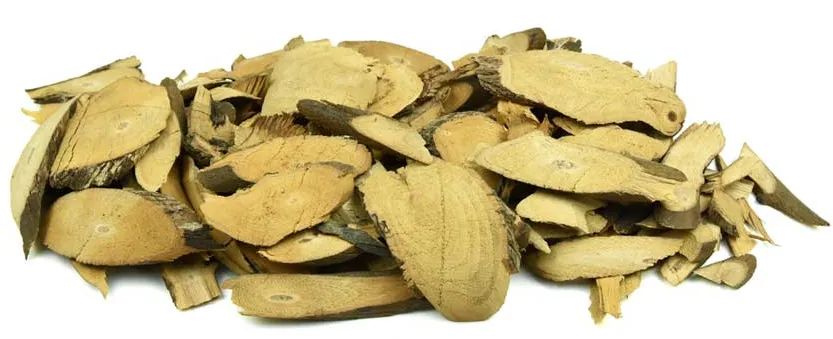
Selected Formulas:
1. For chronic cough due to pulmonary tuberculosis: Tie Bao Jin 180g, Chuan Po Shi 18g, Gan Cao (Licorice) 9g. Decoction for oral administration. (From Xing Lin Yi Xue)
Chuan Po Shi can even penetrate stones. Its properties are bitter and cool, with effects of dispersing cold, expelling wind, promoting dampness, invigorating blood circulation, and unblocking meridians. It belongs to the category of wind-damp dispelling herbs, specifically the wind-damp heat-clearing herbs.
2. For pulmonary tuberculosis, dry cough, internal injury with hemoptysis, hepatitis: Dried Tie Bao Jin 30-60g. Decoction for oral administration. (From Guangzhou Military Region’s Handbook of Common Chinese Herbal Medicines)
3. For rheumatic joint pain, filariasis (lymphangitis): Tie Bao Jin 60-90g. Decoction with yellow wine for oral administration. (From Fujian Folk Herbal Medicine)
4. For rheumatic joint pain, lower back pain: Gou Er Cha 60-90g, stewed with one pig trotter or two eggs for consumption.
5. For epigastric pain: Tie Bao Jin 30g, dried Cycas revoluta flowers 15g. Decoction for oral administration. (From Fujian Folk Herbal Medicine)
Dried Cycas revoluta flowers, also known as iron tree flowers, stop bleeding, reduce phlegm, and clear heat.
6. For urticaria: Tie Bao Jin 30g. Decoction for oral administration. (From Fujian Folk Herbal Medicine)
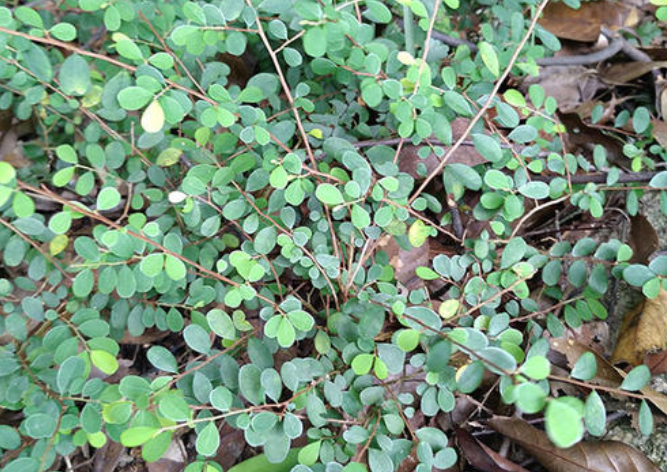
7. For back abscess: Fresh Tie Bao Jin 30g. Stewed in water for oral administration; additionally, fresh leaves can be pounded and applied to the affected area. (From Fujian Folk Herbal Medicine)
Back abscesses are infectious diseases occurring on the back. If not ruptured, the lesions are red, swollen, and raised, with a hard texture, clear edges, severe pain, and fever with chills. If ruptured, it first discharges thick yellow-white pus, then peach blossom-colored pus, and finally light red fluid, indicating heat symptoms, with pain reducing as pus is discharged, and surrounding hard lumps gradually dissipating, with necrotic tissue sloughing off and new tissue gradually forming.
The causes are often due to internal damp-heat, kidney water deficiency, yin deficiency with excess fire, internal fire toxicity, and disharmony of the defensive and nutritive qi, leading to a reverse condition in the flesh. Individuals with a constitution of yin deficiency and excessive consumption of rich foods, along with floating yang qi and excessive heat, can lead to necrosis and pus formation.
Tie Bao Jin has slightly bitter, astringent, and neutral properties, drying dampness, astringing, promoting blood circulation, stopping bleeding, and alleviating pain, making it suitable for this condition.
8. For wind toxin flowing down, testicular swelling and pain: Tie Bao Jin 30-60g. Decoction or with yellow wine for oral administration. (From Fujian Chinese Herbal Medicine)
9. For mouse warts (mouse moles): Decoction of Tie Bao Jin for frequent washing. (From Fujian Folk Herbal Medicine)
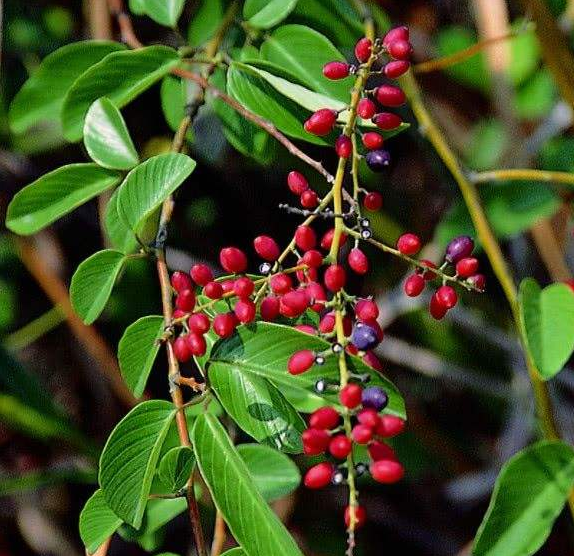
10. For gallbladder roundworms: Gou Er Cha 60g, decocted with sugar for consumption.
11. For traumatic injuries and snake bites: Soak Tie Bao Jin in wine for external application. (From Guangzhou Military Region’s Handbook of Common Chinese Herbal Medicines)
These are the medicinal formulas for Tie Bao Jin! Do you know more medicinal uses?
Reminder: Due to individual differences in health conditions, the formulas provided in this article should be adjusted according to specific conditions, and it is recommended to seek guidance from a professional doctor.(Images sourced from the internet; please contact for removal if there are any copyright issues.)


